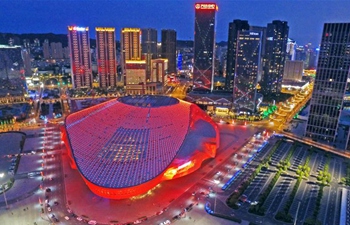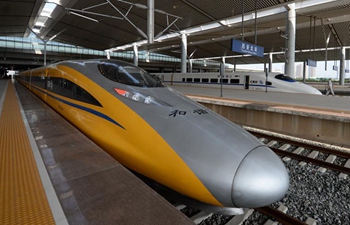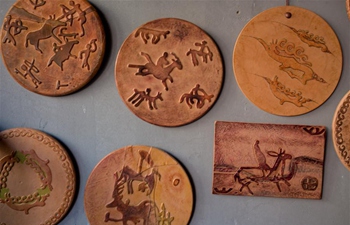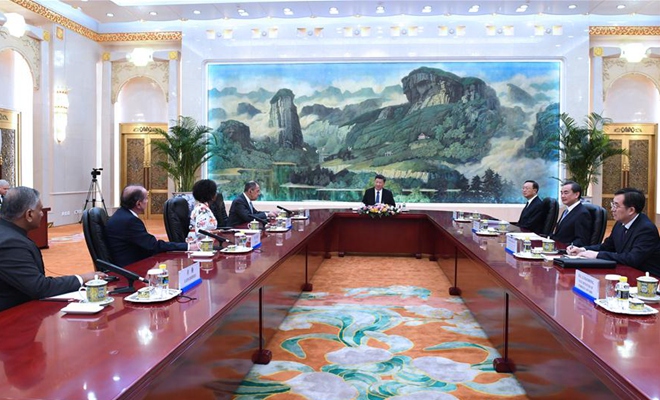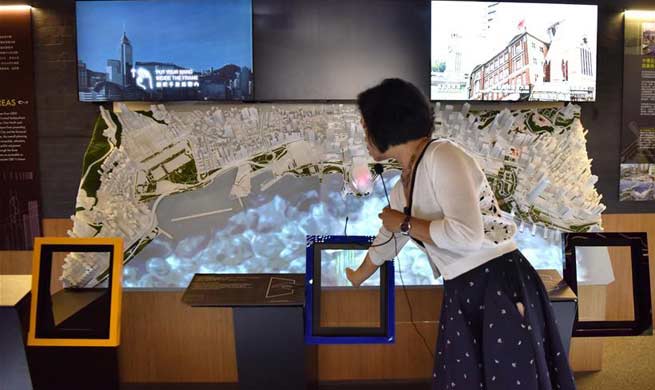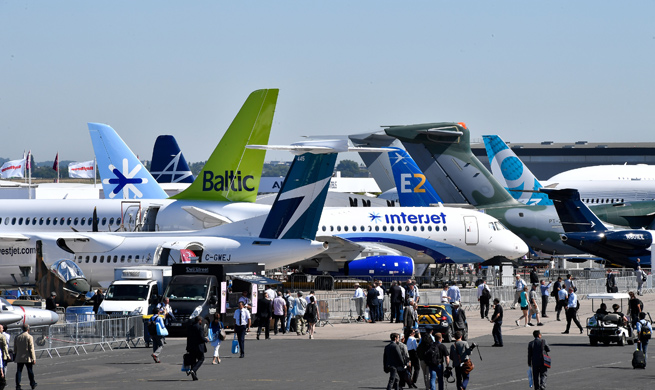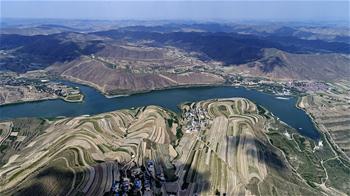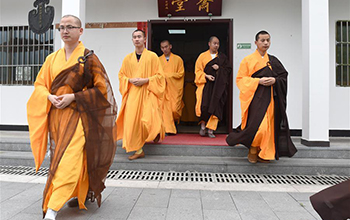by Wang Xiaopeng and Christine Lagat
NAIROBI, June 20 (Xinhua) -- The past few weeks had been a surprise for Kassim, a worker at Fort Jesus, as the UNESCO's World Heritage Site in Kenya's coastal city of Mombasa saw an increase of visitors in a usually low season.
Francis, a reservation official with Voyager Beach hotel, which sits on rocks overlooking the Indian Ocean, told Xinhua that "the hotel recorded 10 more reservations each day on average from the figures in May."
All this is attributed to the launching of the Mombasa-Nairobi Standard Gauge Railway (SGR) train service on May 31.
Kenyan President Uhuru Kenyatta launched the modern train dubbed Madaraka Express to replace a century-old locomotive nicknamed "Lunatic Express" that was introduced by British colonialists to link Mombasa and the resource-rich hinterlands.
The passenger service of the 480-kilometers line, built by China Road and Bridge Corporation, has caused quite a stir in the Kenyan society given its exemplary service.
Recent media reports indicated that Kenyans have been scrambling for tickets to travel from Nairobi to Mombasa and vice versa using the SGR train whose speed and comfort is unrivalled by the old trains or the inter-city buses.
Since first week in service, local dailies have reported that SGR train tickets have been sold out at unprecedented rates in both Nairobi and Mombasa terminus. Images of excited passengers enjoying the SGR train ride have dominated evening news bulletin in local television stations.
Nearly 12,000 passengers had traveled on the newly launched SGR in the week ending June 7, according to operators, indicating the popularity of the service.
HOPE FOR CHANGE
Long before its launch, the railway had triggered high hopes that it will transform Kenya's transport and hospitality sectors.
The biggest beneficiaries of Madaraka Express are local traders, blue and white collar professionals as well as tourists visiting Mombasa for its scenic beaches and heritage sites.
Kenya's tourism stakeholders in their latest assessment of the impact of the SGR train said it has unleashed massive benefits to a sector that contributes about 14 percent to the country's GDP.
Head of Kenya Coast Tourism Association Mohamed Hersi said at a recent media interview that both local and foreign travelers are enjoying a ride through the SGR train specifically to sample the natural wonders along the route.
"SGR train, since its inauguration, has brought new benefits to the tourism industry in the coast region. We have discovered a huge number of domestic tourists are using this train to travel to Mombasa and adjacent towns," said Hersi.
The SGR train takes about four and a half hours to travel from Nairobi to Mombasa and vice versa as opposed to the old train that took almost 12 hours.
It has brought down the cost of transportation from Mombasa to Nairobi while decongesting the highway connecting both cities.
Many Kenyans who had made a journey using the modern train were upbeat that a new era of speedy and risk-free travel had dawned in the country.
Those who spoke to Xinhua aboard the SGR train said they looked forward to a monumental transformation in their country thanks to the modern train.
In addition to revolutionizing transport and commerce in Kenya, the SGR train service is also expected to impact positively on the country's investments climate.
Local observers believed that the SGR project would attract foreign direct investments in strategic sectors of Kenya's economy, including manufacturing, hospitality, agriculture, mining and financial services. The SGR project, they noted, dovetails with the Belt and Road Initiative proposed by China in 2013 to build a trade and infrastructure network connecting Asia with Europe and Africa along the ancient trade routes.
Peter Kagwanja, CEO of a Nairobi-based pan African think-tank Africa Policy Institute, recently wrote in a local daily that Kenya stood a higher chance of becoming a continental economic powerhouse thanks to the launch of the SGR train.
Madaraka Express is also an artery of the northern development corridor linking Kenya to a market of nearly 350 million people in countries including Uganda, Rwanda and Burundi, said Kagwanja.
Some estimates also expected the phase one of SGR project that is currently operational to boost Kenya's GDP by 1.5 percent.
Kenyatta and other Kenyan officials have stated that the modern railway will facilitate development of special economic zones and dry ports in the Kenyan hinterland. These industrial hubs that are embedded in Kenya's vision 2030 are expected to create new jobs for the country's bulging youthful population.




